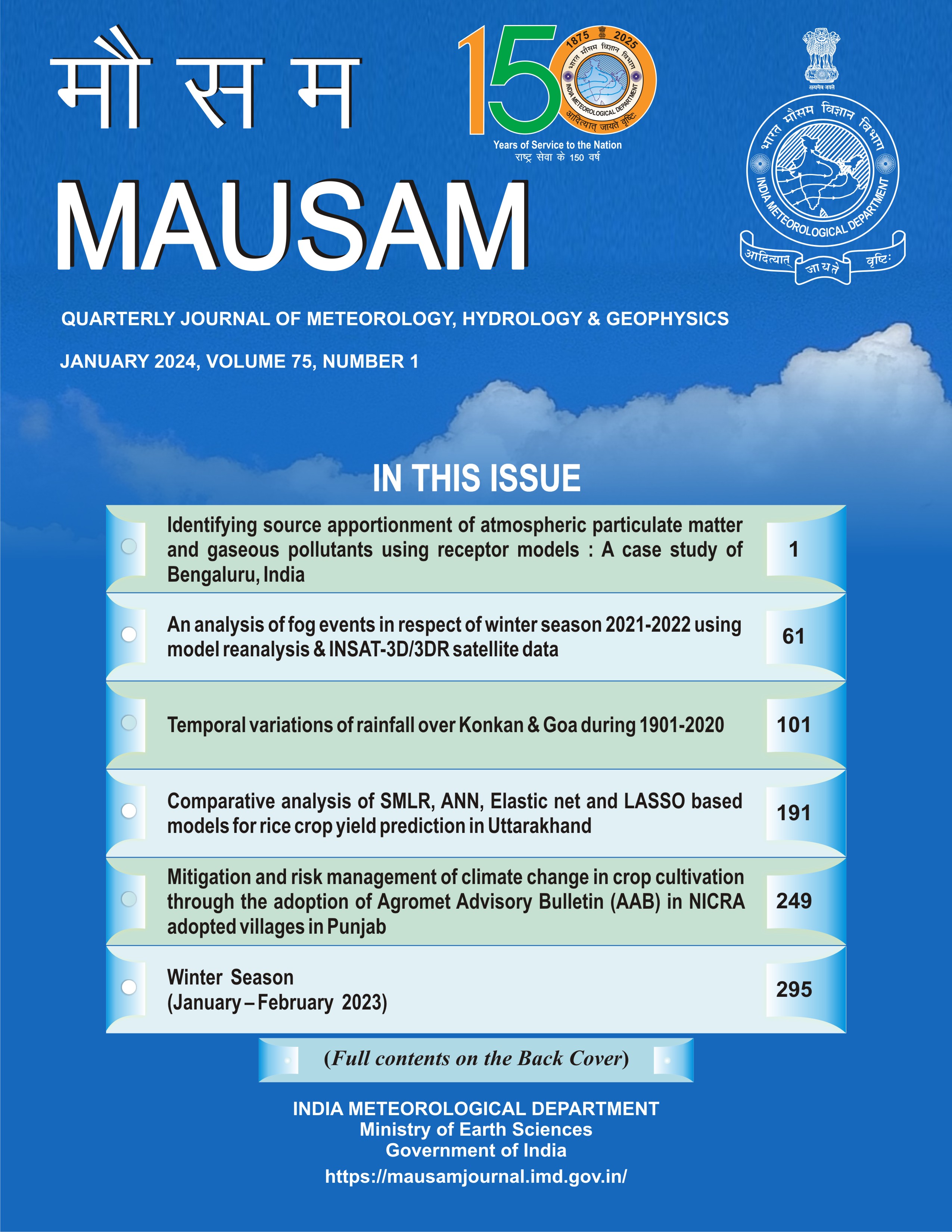Variations in intensity of Bay of Bengal tropical cyclones with surface latent heat flux and other parameters
DOI:
https://doi.org/10.54302/mausam.v75i1.765Keywords:
Intense Tropical Cyclones, Latent Heat Flux, Bay of Bengal, Genesis, Intensification, ERA5Abstract
This study has been undertaken to find out the variation of central pressure (intensity) of intense Tropical Cyclones (TCs) with Sea Surface Temperature (SST), Mid-tropospheric Relative Humidity (MRH), Mid-tropospheric Instability (MI), Vertical Wind Shear (VWS), 200-hPa divergence, and Surface Latent Heat Flux (SLHF) during the lifetime intense TCs. This study also aims to determine the most crucial parameter which shows the highest correlation with central pressure (intensity) of intense TCs during their lifetime. Out of all these parameters, SLHF is highly correlated (R = 0.74) with the central pressure (intensity) of intense TCs. Increase and decrease of SLHF correspond to decrease and increase of TCs central pressure (increase and decrease in TCs intensity). The highest SLHF corresponds to the lowest central pressure (highest intensity).
Downloads
Published
How to Cite
Issue
Section
License
Copyright (c) 2023 MAUSAM

This work is licensed under a Creative Commons Attribution-NonCommercial 4.0 International License.
All articles published by MAUSAM are licensed under the Creative Commons Attribution 4.0 International License. This permits anyone.
Anyone is free:
- To Share - to copy, distribute and transmit the work
- To Remix - to adapt the work.
Under the following conditions:
- Share - copy and redistribute the material in any medium or format
- Adapt - remix, transform, and build upon the material for any purpose, even
commercially.



